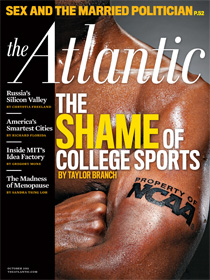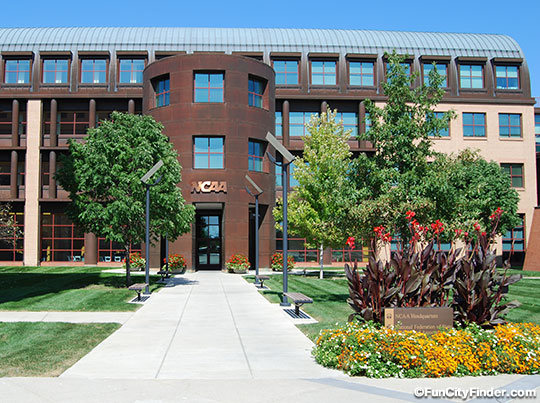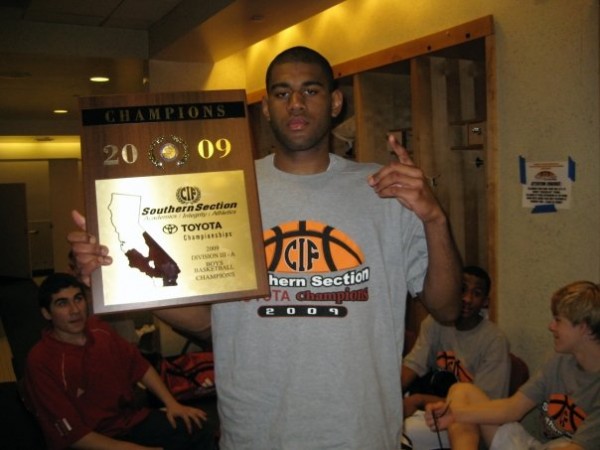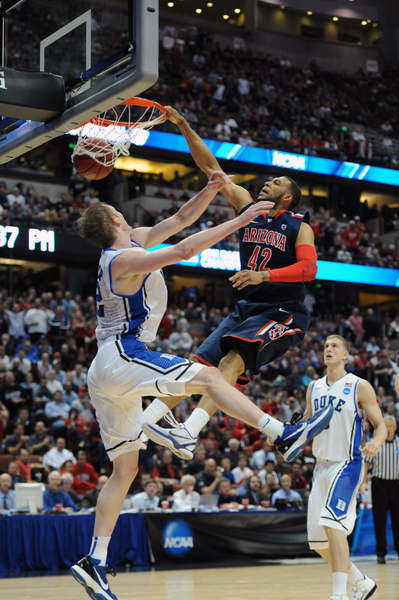Zach Hayes is an editor, contributor and bracketologist for Rush the Court.
Recruiting rankings are a tricky science. For every Kevin Durant, Michael Beasley and Tyreke Evans that rightfully hold fort among the upper echelons of nearly every recruiting publication, there’s a Gerald Green, B.J. Mullens or Lance Stephenson that fades into the abyss rather than catapults into the spotlight. Scouts spend countless hours on the recruiting trail and still whiff just as often as they discover the next diamond in the rough. When rankings, lists, stars or other overly effusive praise is heaped upon immature 16 or 17-year olds, throwing caution to the wind is usually a good strategy.
If the recruiting gurus have it right this time around, then the incoming class debuting at Kentucky this fall may be the best of John Calipari’s coaching career.
No, Marquis Teague has not directed his first half-court set. Anthony Davis hasn’t dunked over SEC-caliber big men. Michael Kidd-Gilchrist hasn’t defended an explosive scorer on the wing, nor has Kyle Wiltjer had to fight for a rebound against 270-pound centers. But there’s a reason why the most respected in the recruiting world have these four incoming freshmen all placed in the top three at their respective positions, and surely we’re going to see those reasons sooner than later on Rupp Arena’s hallowed hardwood.
Throw in another future lottery pick in Terrence Jones, the purest of pure shooters in Doron Lamb, a do-everything senior starter on the wing in Darius Miller and a coach that patches together top-10 defensive teams year in and year out despite absurd turnover, and there’s plenty of reasons why most have Kentucky one line under North Carolina as the 2011-12 season approaches.
Of course, it’s only a ranking, a number, a list. What really counts begins in November.

Darius Miller and Eloy Vargas represent the lone seniors for Kentucky
Team Outlook: Kentucky is loaded with talent and, unlike last season, blessed with depth. Whereas Josh Harrellson, not exactly a model for prime conditioning, had to play upwards of 35 minutes per game deep into Kentucky’s run to the Final Four a season ago, Calipari has the luxury of shuffling Davis, backup center Eloy Vargas and even the 6’9 Wiltjer at the center position. Davis’ upside is nearly unlimited, drawing Kevin Garnett comparisons because of his versatility, mid-range capabilities and rebounding instincts. Calipari also has a plethora of capable wings at his disposal. Kidd-Gilchrist is the most complete incoming freshman in the country and the sophomore Jones is a future top-ten pick who showed glimpses of stardom before fading in the second half of his debut season. Doron Lamb shot a remarkable 49% from three despite the consensus that freshmen struggle to make shots and he’s almost an afterthought given the incoming freshmen and Jones’ return. The real test will be whether rookie Marquis Teague can continue Calipari’s point guard assembly line. There may be headaches and learning moments early, but given Calipari’s track record, Teague should prove himself more than capable.
Non-Conference Schedule Rank: 8. Possibly engrained in his line of thinking from days at UMass and Memphis where non-conference duels often provided stiffer tests than in January and February, Calipari has always scheduled aggressively and this season is no different. It’s a perfect storm for a predominantly young Kentucky squad with both North Carolina and Louisville, two teams most consider top-10 outfits, traveling to Rupp. Their SEC/Big East Challenge opponent is also at home against a likely-overwhelmed St. John’s team. The possible road/neutral tests: Kansas in NYC, Old Dominion in Connecticut and a true road game at Indiana. Although the Hoosiers appear to be making slow strides back to relevance on the floor and major leaps on the recruiting trail, I suspect Kentucky will dispatch the upstart Hoosiers in similar fashion to their contest two seasons ago.
Cupcake City: Major props should be extended to Calipari for testing his team regardless of their youth, but, like any other coach from a blue-blood program, buy games are part of the equation. Out of the schedules I’ve seen thus far, the order of Kentucky’s slate is the most appealing from a strategic standpoint (unlike, say, Michigan State, who opens with some teams named North Carolina and Duke). Kentucky welcomes Marist as a warmup for Kansas. They mix in Radford and Portland before St. John’s, UNC and Indiana. They take their foot off the gas to avoid burnout before the intensity that Louisville provides. It’s precisely how I’d structure my schedule as a coach of an elite program with sky-high expectations.
Toughest Early Season Test: It’s the game of the century. Okay, maybe that’s ridiculous hyperbole, but barring an unforeseen upset, Kentucky will welcome North Carolina to Lexington for a possible national title preview that will feature as many as nine first-round draft picks, two coaching celebrities that manage the most recognizable programs in the nation and a national TV audience on CBS. Keep an eye on how the wily veteran Miller handles the daunting task of defending Harrison Barnes and if Davis can hold his own down low against Carolina’s length.
Read the rest of this entry »
















































